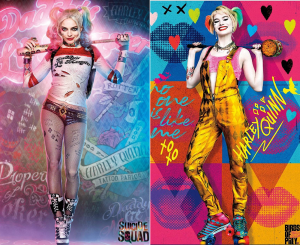This chapter specifies that gaze and architectural structures have the ability to “facilitate social regulation” (White, 2017) and thereby dictate societal and interpersonal norms regarding gender, race, and sexuality to name a few. We’ve addressed this keyword throughout the semester in the ways that the male vs. female heterosexual gaze can influence what media formats say about traditional gender norms. One example that has been discussed lately regarding this issue is comic book characters. Wonder Woman, for instance, used to be the pinnacle of the stereotypical desired female body in the heterosexual male gaze in her 2-D drawn format. However, in her live-action version, her armor and costuming was set to be more functional than erotic, noting the passion of a strong female hero rather than a figure to simply be idled. This can be further seen in the difference in Harley Quinn’s portrayal in Suicide Squad vs. Birds of Prey. In Suicide Squad, scenes were added to simply admire the shape of Margot Robbie’s figure rather than move the plot along and her costume mirrored this idea. In Birds of Prey, Quinn’s solo film, Robbie is dressed in a way that accentuates her personality and intentions rather than simply her figure. Overall, the tactic of gaze demonstrates the director’s aims for the produced media and what the desire of the audience’s perception is. It is a tool that has both hindered and elevated underrepresented groups.

Suicide Squad vs. Birds of Prey
Suicide Squad vs. Birds of Prey. RTF Media and Culture. WordPress, 2020. https://rtfgenderandmediaculture.wordpress.com/2020/11/18/how-birds-of-prey-allows-harley-quinn-to-break-free-from-suicide-squads-male-gaze/.

I found your comparison of Harley Quinn in these two films to be interesting as it is something I have read about before. I was also was struck by the line, “Overall, the tactic of gaze demonstrates the director’s aims for the produced media and what the desire of the audience’s perception is”. Although, I am not sure of your direct meaning or intention with this line it made me question how the “female gaze” is used in media. I think in many ways having the “gaze” of directors from a variety of backgrounds is very important in producing media that speaks to a represents the many identities that exist in the real world. However, this line made me stop and think about “gaze” as a sales tactic. For example, if appealing to a target female audience is using the “female gaze” in a piece of media just another way to make money?